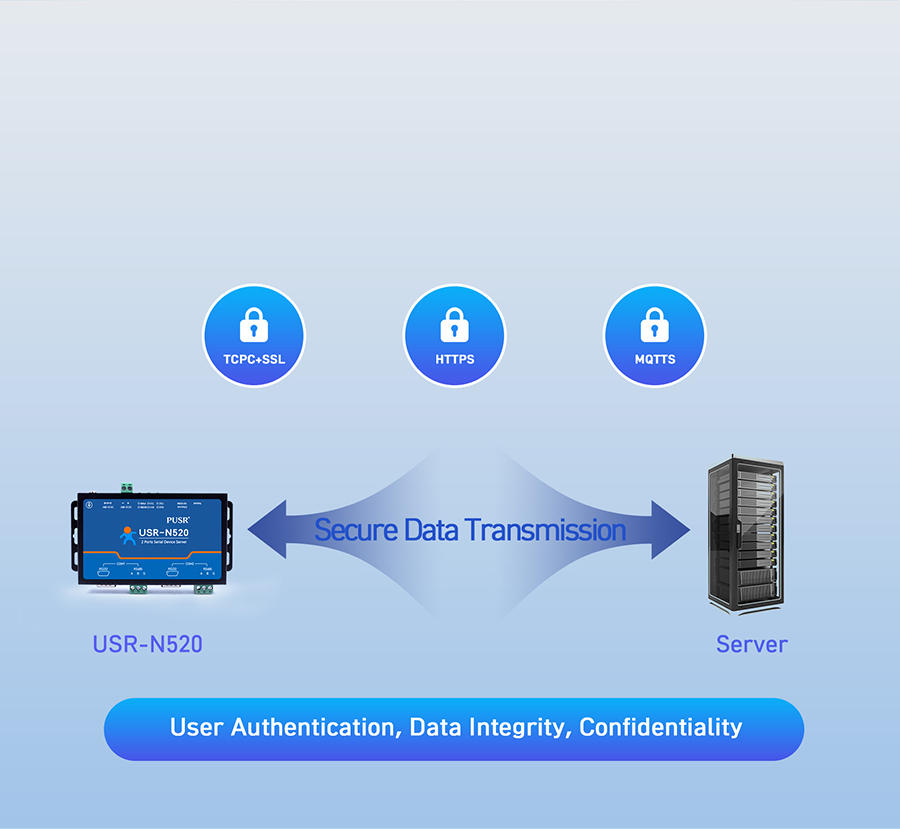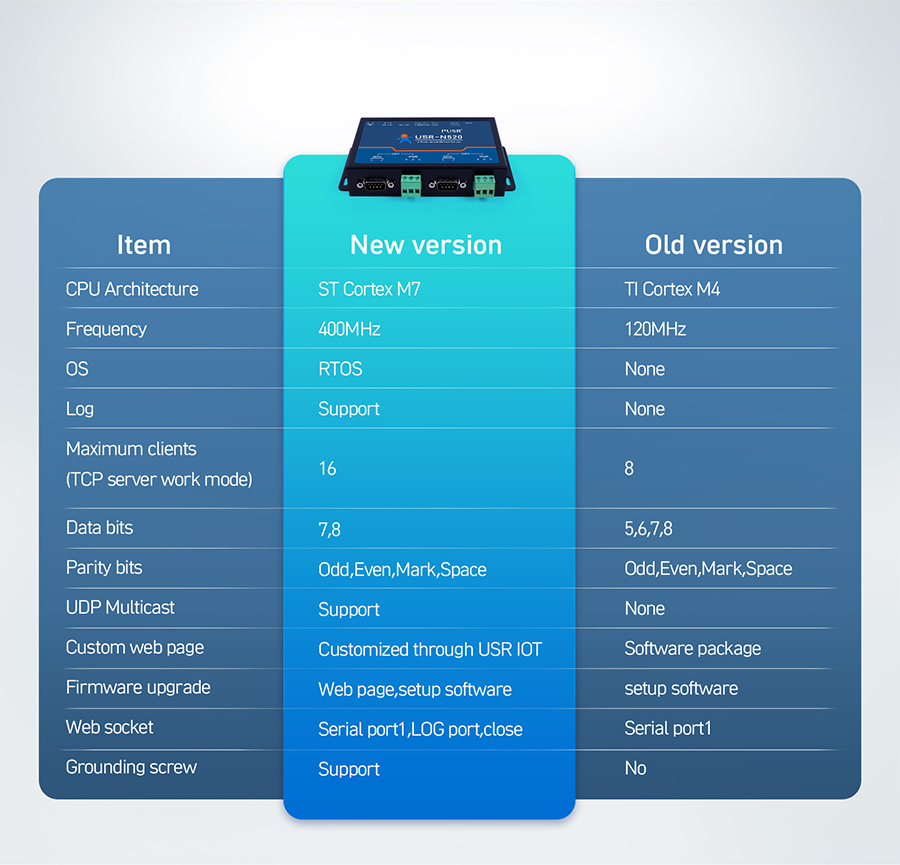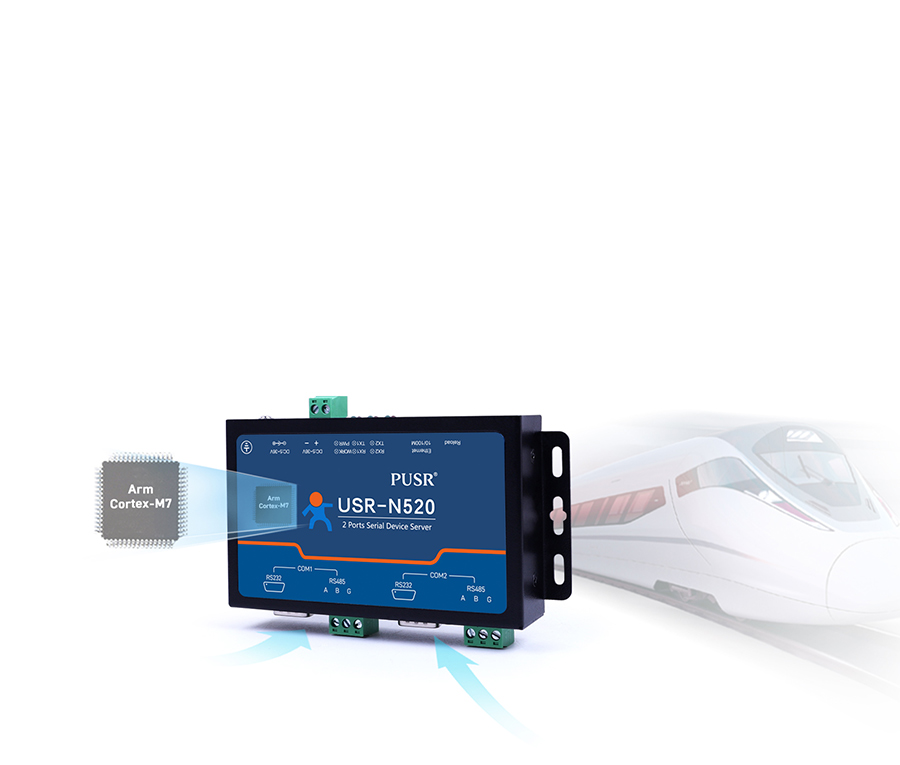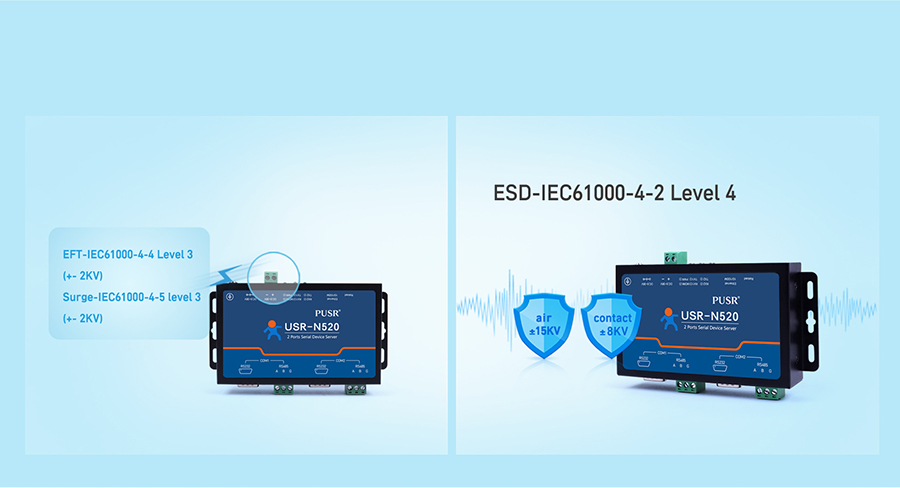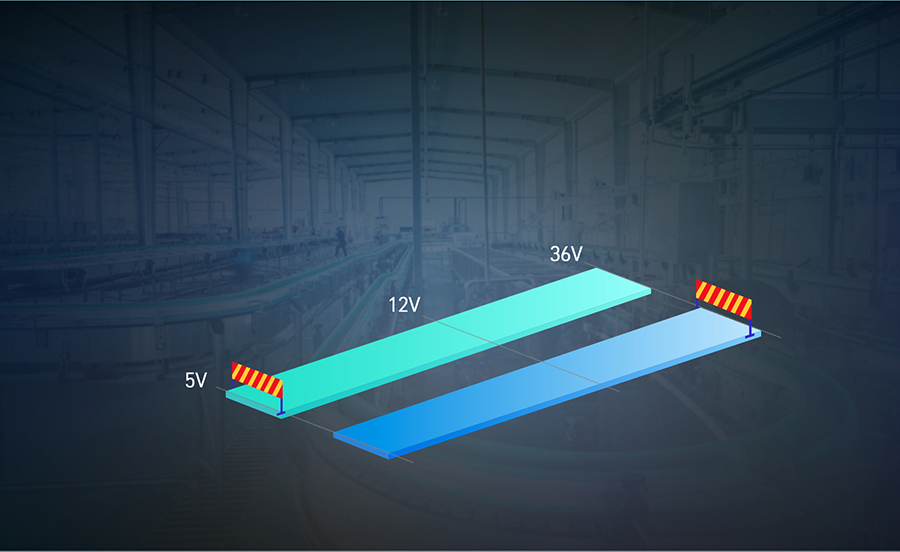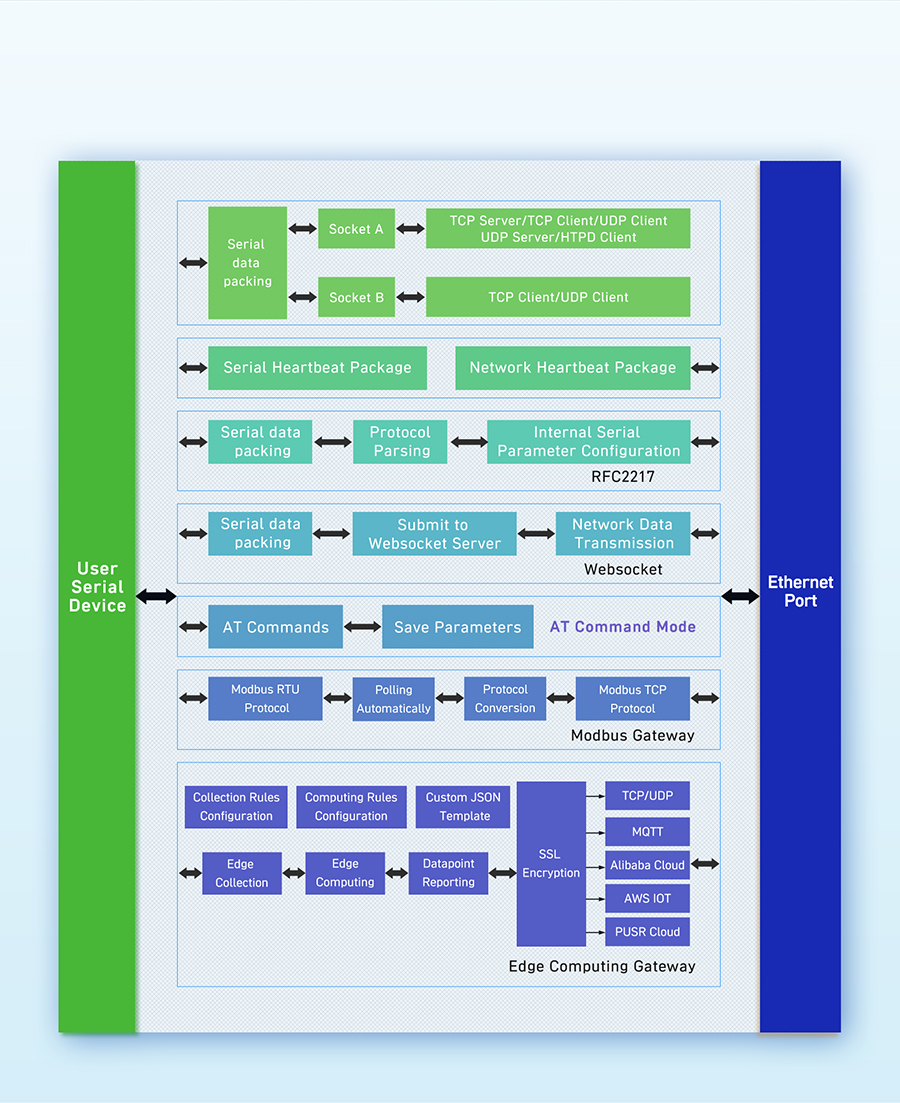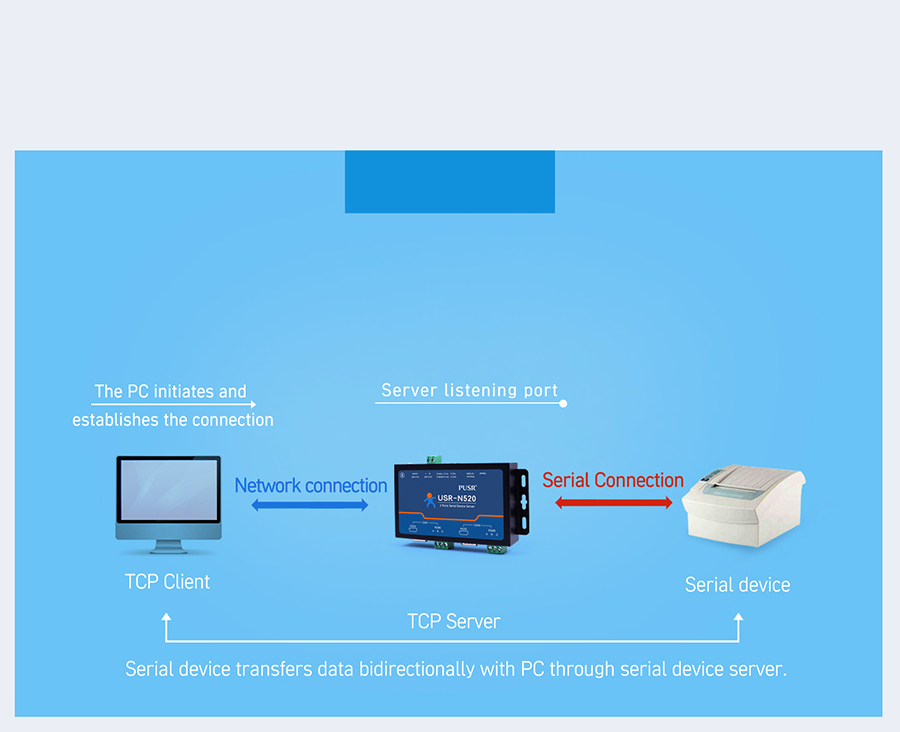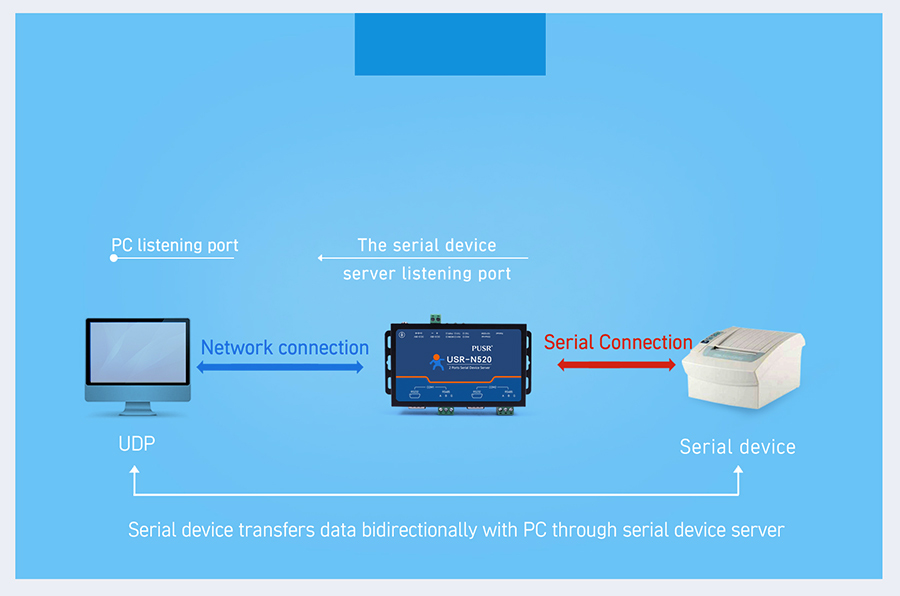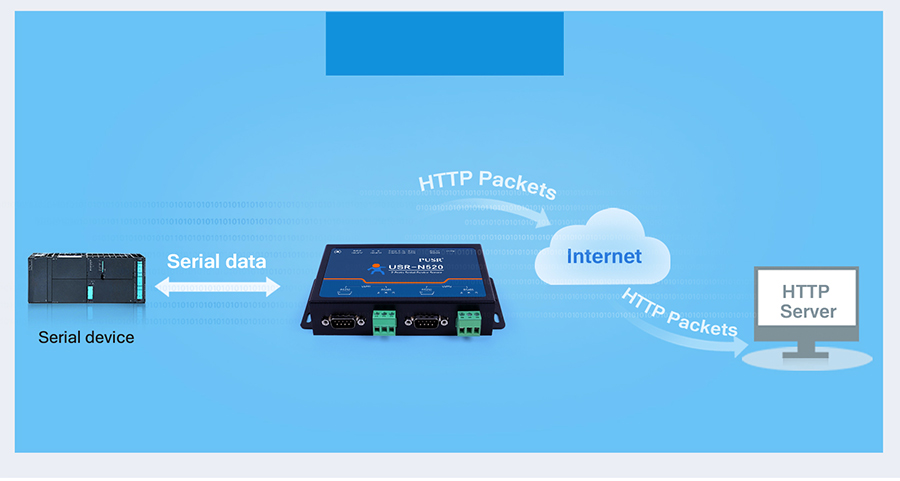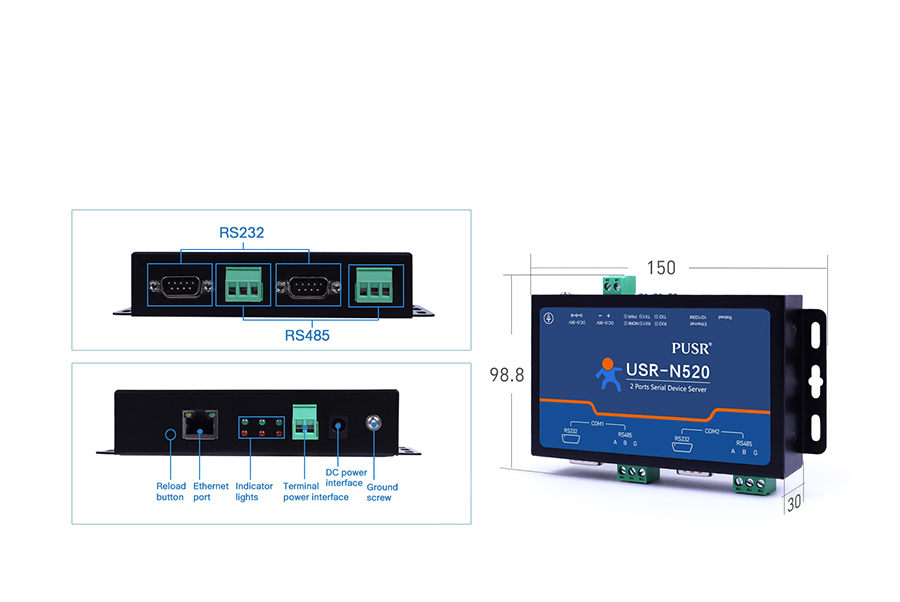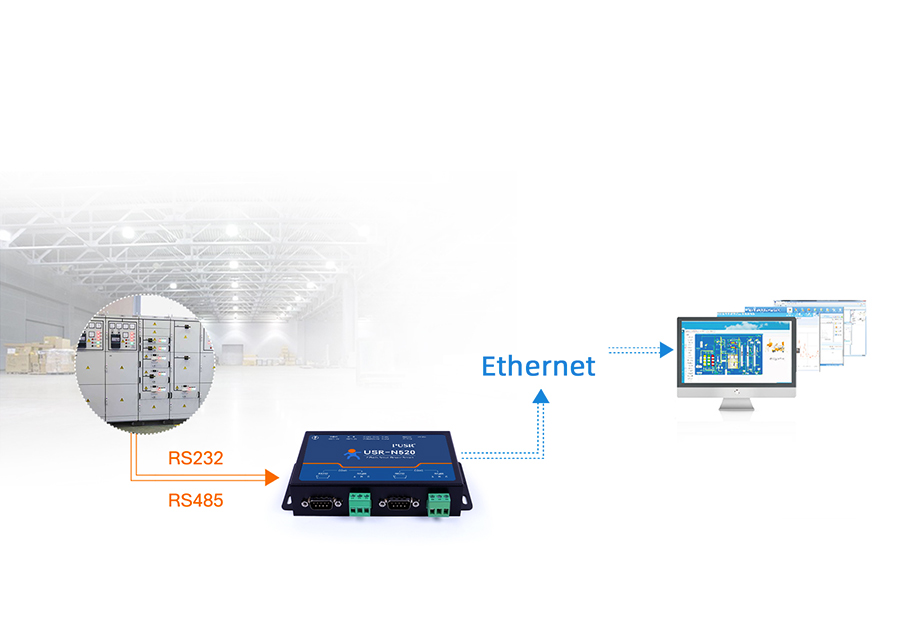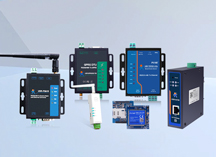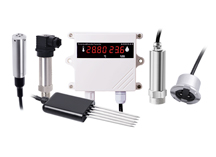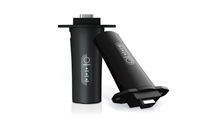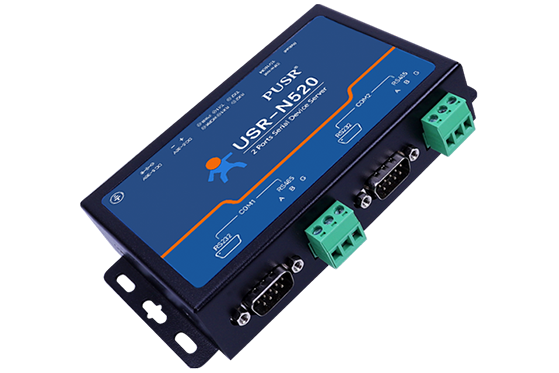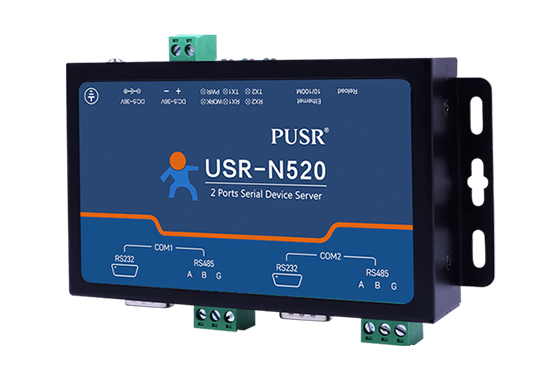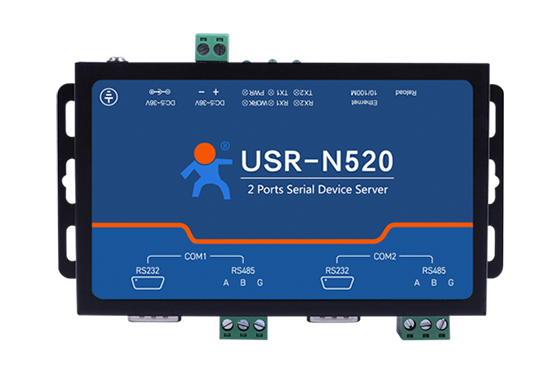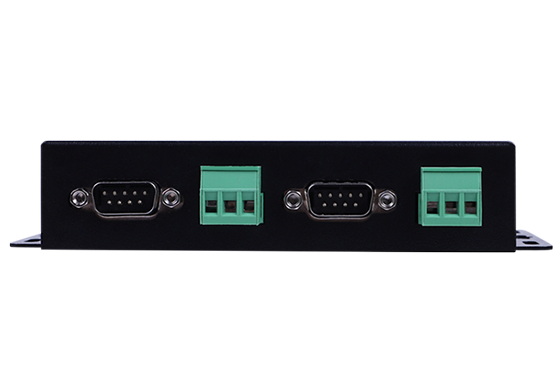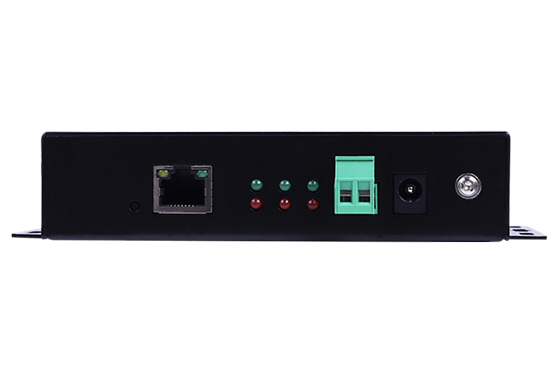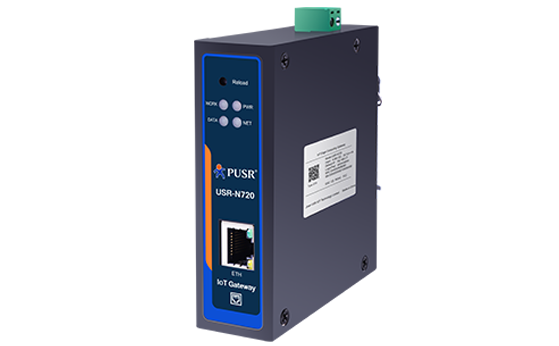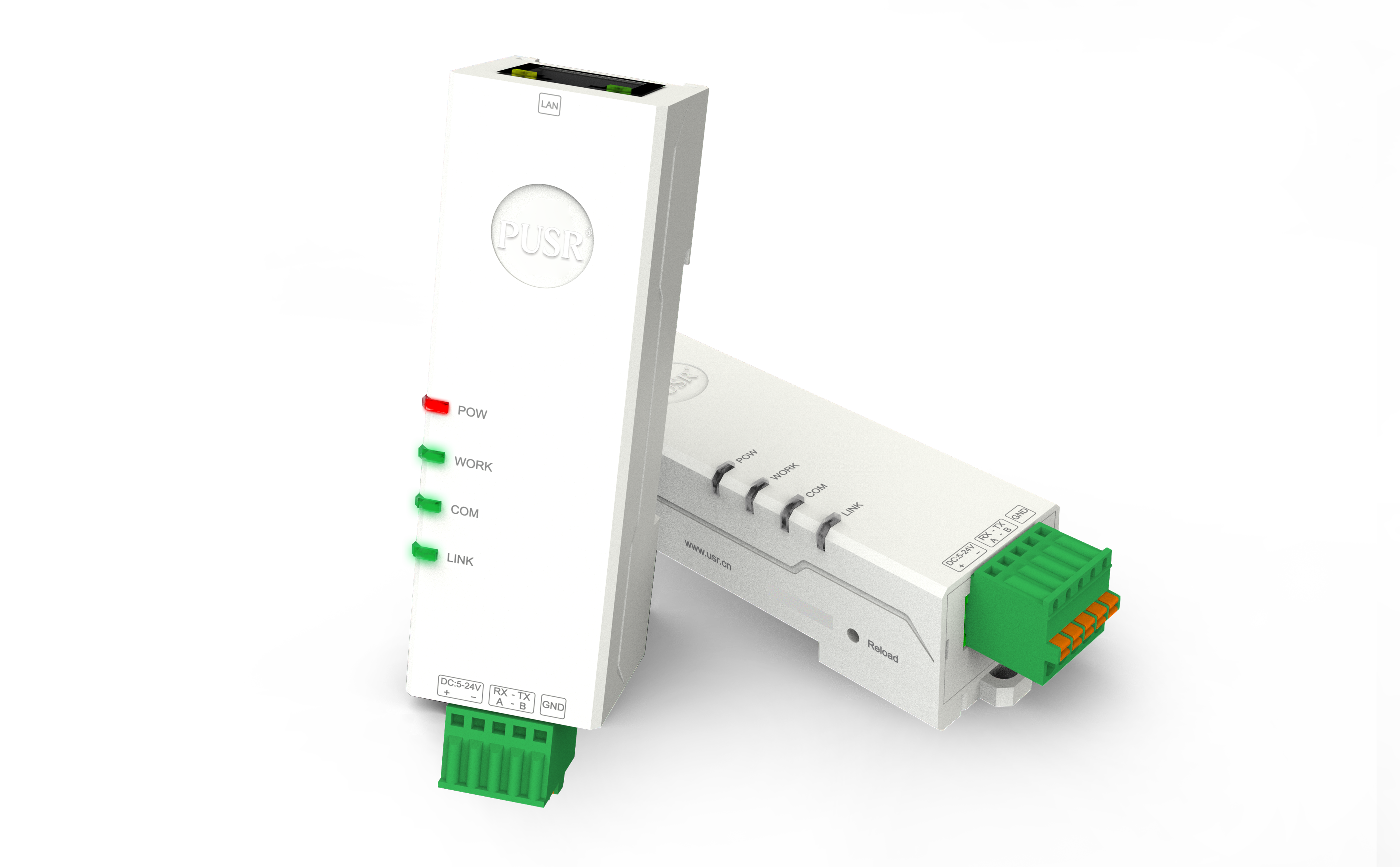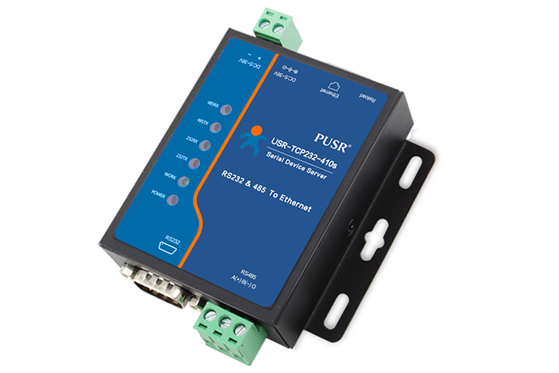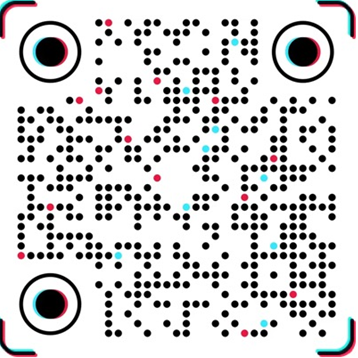In the Era of Rapid Development of the Industrial Internet of Things (IIoT), Seamless Communication and Data Security Among Devices Have Become Core Requirements for Enterprises' Digital Transformation
PUSR's Serial Device Server USR-N520, with its dual-serial-port design, multi-protocol support, edge computing capabilities, and high security, has become the preferred communication solution in fields such as industrial automation, energy management, and smart cities.
1. Dual-Serial-Port Design: Flexibly Adapting to Diverse Needs in Industrial Settings
1.1 Dual Independent RS232/RS485 Serial Ports Supporting Free Protocol Switching
The 2-port serial-to-Ethernet converter N520 is equipped with two independent physical serial ports. Each port can be flexibly switched to RS232 or RS485 mode via a DIP switch, meeting the communication needs of different devices. For example:
Scenario 1: Industrial Automation Production Line
The PLC (RS485) on the production line needs to be connected simultaneously with the host computer (RS232). The N520 can configure one port as RS485 for communication with the PLC and the other port as RS232 for interaction with the host computer, avoiding the additional investment in protocol converters.
Scenario 2: Environmental Monitoring System
The temperature and humidity sensor (RS232) and anemometer (RS485) are uniformly connected to Ethernet via the 2-port serial-to-Ethernet converter N520, enabling centralized data collection and cloud uploading.
1.2 High-Precision Parameter Configuration to Ensure Communication Stability
Each serial port supports independent configuration of baud rates (600bps-230.4Kbps), data bits (5-8 bits), stop bits (1-2 bits), and flow control modes (hardware RTS/CTS or software XON/XOFF). For example:
Case: Weighbridge Weighing System
The weighbridge instrument (RS485) needs to work simultaneously with the ticket printer (RS232). The 2-port serial-to-Ethernet converter N520 ensures the real-time and accuracy of data transmission by configuring the parameters of both ports, avoiding printing errors caused by protocol mismatches.
1.3 Industrial-Grade Hardware Design to Adapt to Harsh Environments
The 2-port serial-to-Ethernet converter N520 adopts EMC Level 3 protection standards and is equipped with a watchdog circuit, enabling it to withstand extreme temperatures ranging from -40°C to 85°C and strong electromagnetic interference. Its wide voltage input (DC 5-36V) and reverse power connection protection design ensure stable device operation even during voltage fluctuations or wiring errors. For example:
Application: Outdoor Charging Stations
The RS485 communication module of the charging station needs to be exposed outdoors for a long time. The IP30 protection rating and lightning resistance capability of the 2-port serial-to-Ethernet converter N520 can effectively extend the device's lifespan and reduce maintenance costs.
2. Data Encryption and PUSR Cloud Management: Building a Secure and Efficient IoT Ecosystem
2.1 Multi-Level Encryption Mechanism to Ensure Data Transmission Security
The 2-port serial-to-Ethernet converter N520 supports SSL/TLS encryption protocols. Bidirectional certificate authentication can be enabled in TCP Client, HTTP Client, and MQTT modes to prevent data eavesdropping and tampering. For example:
Scenario: Financial Self-Service Terminals
The transaction data of ATMs is uploaded to the cloud via the MQTT encrypted channel of the 2-port serial-to-Ethernet converter N520, ensuring the security of user information and funds and meeting the compliance requirements of the financial industry.
2.2 PUSR Cloud Platform: Enabling Remote Operation and Maintenance and Intelligent Management
Through the PUSR Cloud platform, users can remotely monitor the operating status, configure parameters, and upgrade firmware of the 2-port serial-to-Ethernet converter N520, significantly reducing on-site maintenance costs. For example:
Case: Smart Agriculture Irrigation System
Multiple soil moisture sensors distributed in farmland are connected to the cloud via the 2-port serial-to-Ethernet converter N520. Administrators can view data in real-time and adjust irrigation strategies through a mobile app without being on-site.
2.3 Industry Adaptability Analysis
Energy Industry: The power meter data of substations is encrypted and uploaded to the monitoring center to prevent grid paralysis caused by hacker attacks.
Medical Field: The serial port data of medical devices is encrypted and transmitted to the HIS system via the 2-port serial-to-Ethernet converter N520 to ensure patient privacy security.
Smart Cities: The RS485 control signals of traffic lights are encrypted and transmitted to the command center via the 2-port serial-to-Ethernet converter N520 to avoid traffic chaos caused by signal interference.
3. Modbus Gateway Function: Solving Industrial Protocol Compatibility Issues
3.1 Modbus RTU/TCP Protocol Interconversion Supporting Multi-Host Polling
The 2-port serial device server N520 has a built-in Modbus gateway function, enabling seamless integration of traditional Modbus RTU devices (such as sensors and actuators) into a Modbus TCP network. It supports the collection and address mapping of up to 128 data points. For example:
Scenario: Factory Energy Management System
The electricity meters (Modbus RTU) dispersed in the workshop are converted to the Modbus TCP protocol via the N520 and uploaded to the energy management platform in a centralized manner, enabling energy consumption analysis and optimization.
3.2 Typical Application Scenarios
Unattended Weighing System: The 2-port serial device server N520 connects the barrier gate, weighbridge instrument, LED display, and RFID reader. Through the Modbus gateway function, it realizes automatic vehicle identification, weighing data collection, and display control.
Industrial Boiler Monitoring: The temperature and pressure sensors (Modbus RTU) of the boiler are connected to the SCADA system via the 2-port serial device server N520, enabling remote monitoring and alarm linkage.
4. Edge Computing Capability: Empowering Devices with Local Decision-Making Authority
4.1 Data Preprocessing and Intelligent Reporting
The 2-port serial device server N520 is equipped with a Cortex-M7 processor (clock speed 400MHz), which can filter, compress, and cache the collected data locally. Only key information is uploaded to the cloud, reducing the server's burden. For example:
Case: Wind Farm Vibration Monitoring
The massive data generated by the wind turbine vibration sensors is processed by the edge computing capability of the 2-port serial device server N520, and only abnormal vibration frequency bands are uploaded, reducing cloud storage and computing costs.
4.2 Custom JSON Format Reporting to Adapt to Diverse Platforms
Users can define the data reporting format (such as {"temp":25.5, "humidity":60}) through a configuration tool, enabling the 2-port serial device server N520 to directly interface with mainstream IoT platforms such as Alibaba Cloud and Amazon Web Services without secondary development.
4.3 Core Advantages of Edge Computing
Real-Time Performance: Data is processed locally, with a response delay of less than 10ms, meeting the stringent requirements of industrial control scenarios.
Reliability: When the network is interrupted, the 2-port serial device server N520 can store data locally and automatically resend it when the network is restored, avoiding data loss.
Security: Sensitive data is encrypted locally before being uploaded, reducing the risk of leakage during transmission.
5. MQTT Communication Configuration: Five Steps to Quickly Connect Devices to the Network
5.1 Hardware Connection and Driver Installation
Connect the 2-port serial device server N520 to a router or switch via a network cable, ensuring that the Link light is on (green).
Use a USB-to-TTL module to connect to the debugging serial port of the N520. After installing the CH340 driver, confirm the port number (such as COM3) in the Device Manager.
5.2 Parameter Configuration and MQTT Connection
Log in to the Configuration Tool: Open the SerialPort_To_Network_ConfigTools software and select the COM port corresponding to the 2-port serial device server N520.
Set Network Parameters: Configure a static IP (such as 192.168.1.100) or enable DHCP for dynamic acquisition.
Enable MQTT Function: Select MQTT Client in the "Working Mode," fill in the server address (such as mqtt.example.com), port (1883), and ClientID (it is recommended to use the MAC address).
Subscribe and Publish Topics: Set the topic published by the device (such as /device/n520/data) and the control topic subscribed to (such as /device/n520/cmd).
Save and Restart: Click "Save Configuration" and then restart the device. Observe the log showing "MQTT CONNECTED" to indicate a successful connection.
5.3 Verify Communication Effect
Subscribe to the published topic of the 2-port serial device server N520 using the MQTTX client and send a test message (such as {"cmd":"test"}). If the debugging serial port of the N520 outputs the same content, the communication is normal.
6. Dual-RS485 Port Project Applications: Building a High-Redundancy Communication System
6.1 Typical Project Scenarios
Rail Transit Signal Control: The dual RS485 ports are connected to the primary and backup signal controllers respectively. When the primary link fails, it automatically switches to the backup link, ensuring zero interruption of signal transmission.
Sewage Treatment Plant: The two ports are connected to the flow meters at the water inlet and outlet respectively, enabling independent data collection and comparative analysis to avoid data distortion caused by single-point failures.
6.2 Key Points for Project Implementation
Redundancy Design: Configure independent power supplies and network links for each port to improve system reliability.
Protocol Isolation: Map the two ports to different virtual COM ports through the virtual serial port function of the 2-port serial device server N520 to avoid protocol conflicts.
Centralized Monitoring: Use the PUSR Cloud platform to uniformly manage multiple 2-port serial device server N520 devices, enabling fault warning and batch configuration.
2-Port Serial Device Server N520 - The Communication Foundation of the Industrial Internet of Things
The PUSR Serial Device Server N520, with its dual-serial-port flexibility, high security, edge computing capabilities, and ease of use, has become a key device in the field of the industrial Internet of Things. Whether it is the intelligent transformation of traditional factories or the construction of emerging smart cities, the N520 can provide reliable communication guarantees, helping enterprises achieve digital transformation and efficiency improvement. Choosing the 2-port serial device server N520 means choosing a stable, efficient, and secure IoT future.


